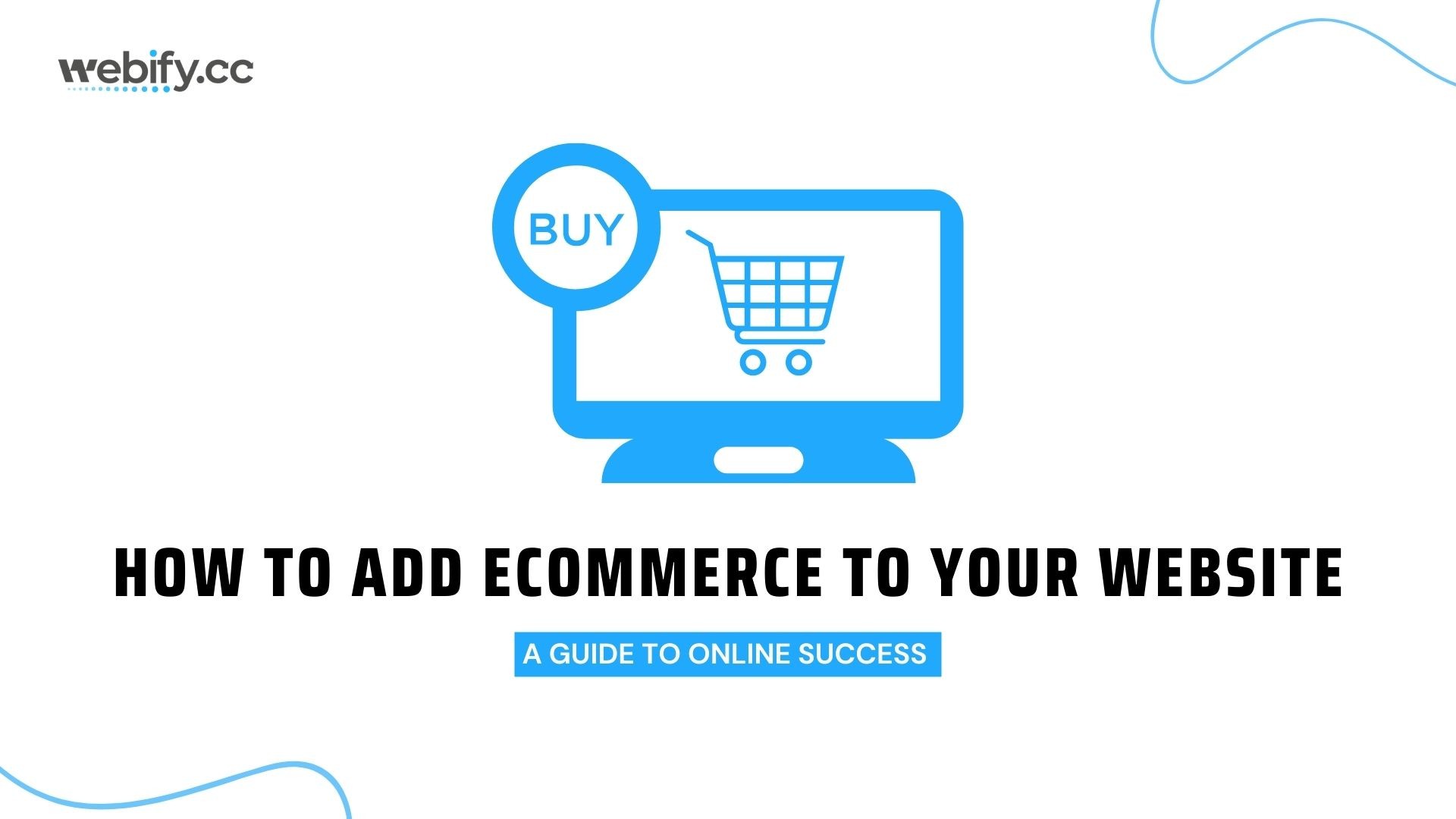How to Add eCommerce to Your Website: A Guide to Online Success

In today’s digital landscape, eCommerce has become a crucial aspect of running a successful business. Adding eCommerce functionality to your website allows you to reach a wider audience, increase sales, and provide a convenient shopping experience for your customers.
Why is eCommerce Important?
1. Expanded Reach:
With an eCommerce website, you can transcend geographical limitations and reach customers from around the world. Your products or services can be accessible to anyone with an internet connection, significantly expanding your customer base.
2. Increased Sales Opportunities:
By enabling online sales, you open up new revenue streams for your business. Customers can browse and purchase your products or services at any time, which increases the chances of making sales even outside regular business hours.
3. Improved Customer Convenience:
eCommerce provides convenience to your customers by allowing them to shop from the comfort of their own homes. They can explore product details, compare prices, read reviews, and make purchases with just a few clicks.
4. Detailed Analytics:
An eCommerce platform provides valuable insights into customer behaviour, allowing you to track sales, analyze customer preferences, and make data-driven decisions to optimize your marketing and sales strategies.
5. Cost-Effectiveness:
Compared to running a physical store, setting up an eCommerce website is generally more cost-effective. You can save on expenses such as rent, utilities, and staffing while still reaching a vast customer base.
How to Add eCommerce to Your Website:
1. Choose an eCommerce Platform:
Select a robust eCommerce platform that suits your business needs. Popular options include Shopify, WooCommerce (built on WordPress), Magento, and BigCommerce.
2. Set Up Your Online Store:
Follow the platform’s instructions to set up your online store. This typically involves selecting a theme, customizing your store’s appearance, and configuring essential settings like payment gateways and shipping options.
3. Add Product Listings:
Create compelling product listings by including high-quality product images, detailed descriptions, pricing information, and any applicable variations or options.
4. Configure Payment and Shipping Options:
Integrate secure payment gateways to allow customers to make purchases seamlessly. Set up shipping options based on your product’s weight, dimensions, and shipping destinations.
5. Enable Shopping Cart and Checkout:
Ensure that your eCommerce platform offers a user-friendly shopping cart feature that allows customers to add products and proceed to checkout. Streamline the checkout process by minimizing the number of steps required for customers to complete their purchase.
6. Implement Security Measures:
Protect your customers’ sensitive information by implementing SSL certificates and other security measures to ensure safe transactions.
7. Optimize for Search Engines:
Implement SEO best practices such as optimizing product descriptions, titles, and meta tags to improve your website’s visibility in search engine results and attract more organic traffic.
Ready to revolutionize your business with an eCommerce website? Contact Webify today!
Conclusion:
Adding eCommerce functionality to your website opens up new opportunities for growth, increased sales, and improved customer convenience. By following the steps outlined above and partnering with a reputable web design agency like Webify, you can seamlessly integrate eCommerce into your website and embark on a journey towards online success. Don’t miss out on the vast potential of eCommerce – start selling your products or services online today!
GET IN TOUCH
